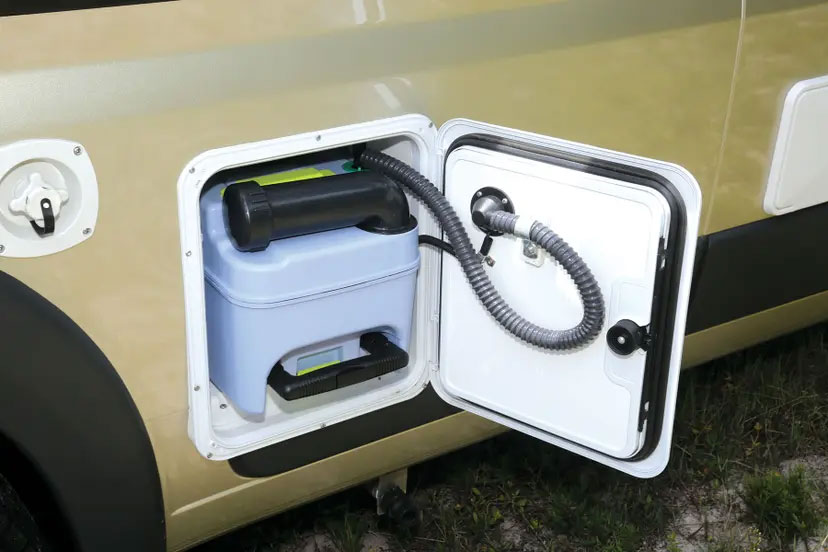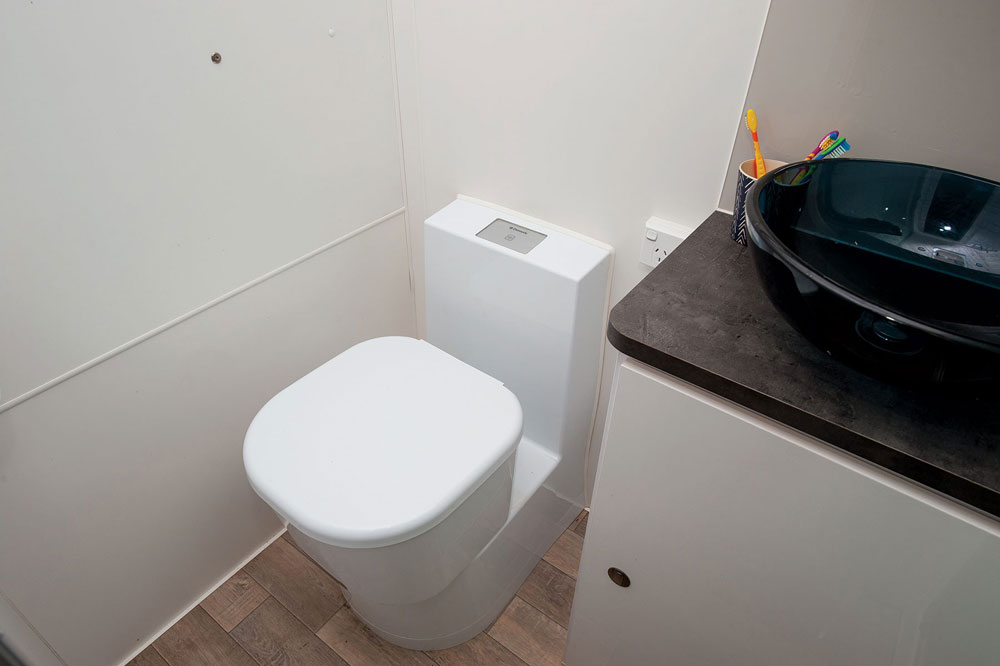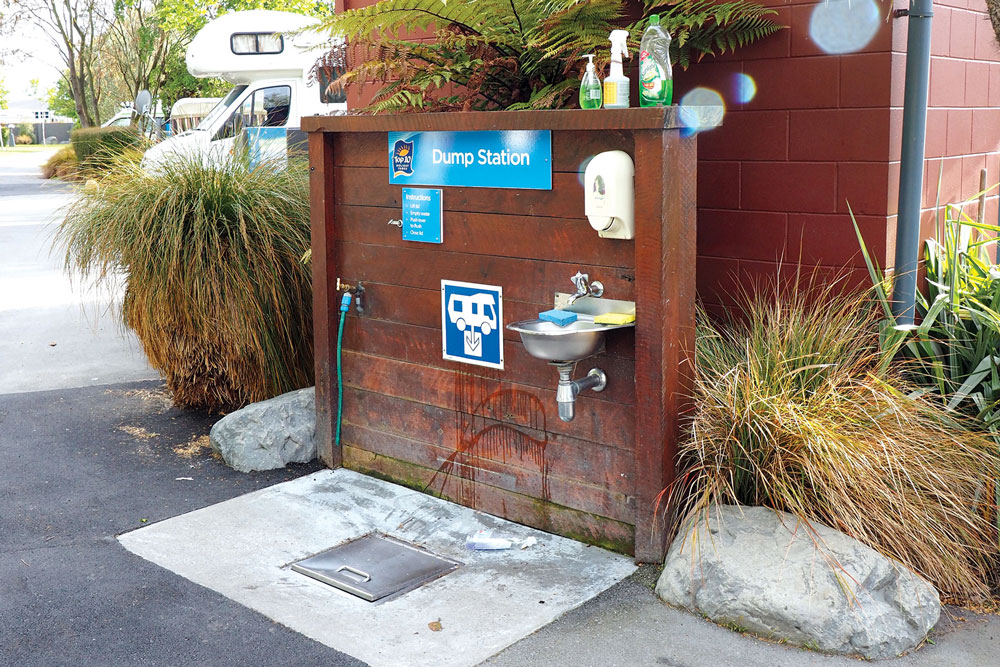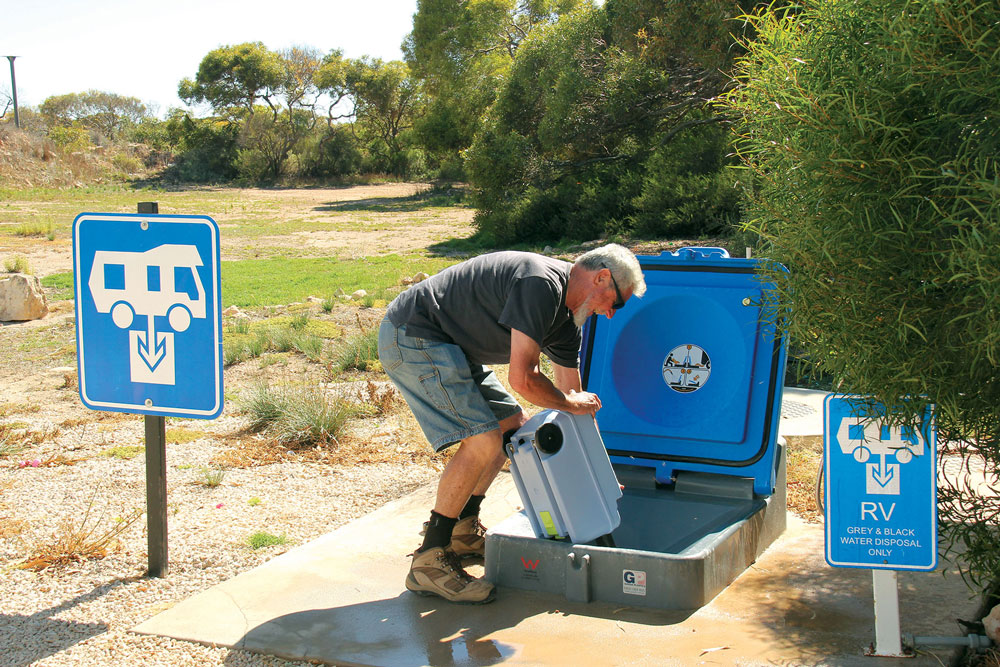
A Guide to the Various Types of RV Toilets
A Guide to Choosing the Right Type of RV Toilet
There are various types of RV toilets available — and the choice
comes down to preference, budget, space and the amount of time
you intend to use it.
There are various types of recreational vehicle (RV) toilets, each with advantages and disadvantages. Here's a breakdown.
Cassette Toilets
The most common type of RV toilet in Australia is the cassette toilet, which consists of a toilet bowl, a waste-holding tank (also known as a cassette), and a flushing mechanism.
The toilet bowl of an RV cassette toilet functions similarly to a standard household toilet. It has a seat and lid and is used for sitting and doing one’s business.
Cassette toilets have a flushing mechanism powered by a minor or manual hand pump. When activated, the flushing mechanism releases water from the RV's freshwater tank into the toilet bowl, allowing the user to flush the waste into the waste-holding tank (cassette).
The cassette is located underneath the toilet bowl and is designed to hold the waste until it is full and the waste can be properly disposed of at a designated dump point. The cassette typically has wheels and a handle for easy transport and removal from the RV and access is from a hatch/door from the exterior of the vehicle.

At the dump point, the cassette is emptied into a waste disposal system, and then it can be rinsed and cleaned before being reinstalled in the RV.
Advantages of Cassette Toilets
- Portable: The compact and removable cassette design makes RV cassette toilets highly portable and convenient for use in small spaces like RV bathrooms.
- Easy cleaning: Cassette toilets are relatively simple to maintain and clean, and the waste-holding tank can be quickly emptied and rinsed as needed.
- Water efficient: Many RV cassette toilets use minimal water for flushing, making them more water efficient than some other types of RV toilets.
Disadvantages of Cassette Toilets
- Limited capacity: A cassette toilet's waste-holding tank is smaller than the holding tanks of other types of RV toilets, so it may need to be emptied more frequently, especially during heavy use.
- Manual effort: Emptying the waste-holding tank of a cassette toilet requires manual effort and transportation to a dump point.
- Chemicals: Cassette toilets require chemicals to help break down the waste and prevent smells.
- Maintenance: Proper sealing is crucial to prevent odours from escaping the waste tank.
Composting Toilets
Composting toilets are increasingly popular in RVs due to their environmentally friendly nature and the freedom they offer RV owners from traditional systems, which rely on water for flushing.
The two main differences with a composting toilet are:
- No water is required for flushing
- Liquid and solid waste are separated into two different receptacles
Composting toilets facilitate the natural decomposition of human waste into compost material through a combination of microbial action, heat and aeration.

Most composting toilets are designed with separate compartments for urine and solid waste. The urine is diverted away from the solid waste to prevent excess moisture in the composting chamber, which can impede the composting process. This may require some behaviour change on the part of male campers because it will mean sitting on the toilet seat rather than standing.
Usually, the urine bottle is removable, so the contents can be poured out. This can be done at a designated dump point.
Solid waste, typically mixed with a bulking agent such as peat moss or coconut coir, is deposited into the composting chamber, where the decomposition process occurs. The bulking agent helps absorb excess moisture, provides aeration, and creates an environment conducive to microbial activity. These microorganisms consume the waste, converting it into compost material and releasing heat as a byproduct.
Some composting toilets are equipped with ventilation systems to promote airflow within the composting chamber. This ventilation helps regulate moisture levels, prevents odour buildup, and encourages aerobic decomposition, where oxygen-dependent microorganisms break down the waste efficiently.
To ensure thorough decomposition, composting toilets require periodic mixing or agitation of the compost material. This can be done manually by turning a handle or automatically through the toilet's built-in mechanisms.
Over time, the waste in the composting chamber transforms into compost material resembling soil. Depending on the capacity of the composting toilet and the frequency of use, compost removal may be required every few weeks to months. The compost can be safely disposed of in a bin of or used as fertiliser for non-edible plants, following proper guidelines and regulations.
Advantages of Composting Toilets
- Environmentally friendly: Composting toilets break down waste through natural processes, often without the use of water or chemicals.
- Water conservation: Composting toilets don't require water for flushing, which can be particularly beneficial when camping off-grid with no access to mains water
- Odour control: Properly maintained composting toilets typically have minimal smell compared to traditional RV toilets.
- Versatility: Composting toilets can be installed in various types of RVs, including motorhomes, campervans, and trailers. They don't require connection to external sewage systems, offering more flexibility in RV design and layout.
- Lower maintenance: While composting toilets do require regular maintenance, such as emptying the compost bin and adding composting material, they generally have fewer moving parts and simpler maintenance requirements compared to other RV toilet systems.
Disadvantages of Composting Toilets
- Initial cost: The upfront cost of purchasing and installing a composting toilet can be higher than traditional RV toilets. However, over time, the savings on water usage and potential disposal fees may offset this initial investment.
- Limited capacity: Composting toilets typically have smaller waste storage capacities than traditional RV toilets. RV owners may need to empty the composting bin more frequently, especially during heavy use or extended trips.
- Learning curve: RV owners who are accustomed to traditional flush toilets must learn and adjust to using and maintaining a composting toilet. Proper composting practices, including adding bulking material and managing moisture levels, are essential for effective operation.
- Space requirements: Composting toilets may require additional space in the RV for the composting bin and ventilation system. RV owners should consider whether they have adequate space available for installation before choosing a composting toilet.
Portable Toilets
The good old portable potty has been a mainstay of the caravan and campervan world for decades. ‘Porta Potti’ style toilets for RVs and campers are generally used in a dedicated toilet tent outside unless you have a dedicated place for them inside your RV.
Portable toilets for caravans are easy to clean, but given their low height, they are not so easy to use if mobility is limited. Pop-up tents to house them are readily available, and the portable unit is always a good backup for kids sleeping outside the caravan in swags or an annexe.
The advantages of this style of toilet for caravans are that they use less water and that emptying them is simpler than with many fixed installations. However, on the downside, they will require emptying more often, and that’s not a pleasant task in anyone’s books.
Where to Dump
Australia is well-equipped with hundreds of public dump points spread across the country. Most of these dump points are free services local councils provide to encourage travellers to stop in their towns and responsibly dispose of waste from their recreational vehicles (RVs). Many hundreds more are located in caravan parks and camping grounds across the country.
A dump point is a designated septic holding tank where travellers can empty their toilet cassettes, portable toilets and grey water tanks from caravans and motorhomes.
These facilities are set up for easy and responsible waste disposal. Dump points can be found in most major towns, caravan parks, visitor centres, and even remote locations.


How to Use a Dump Point
- Arrive at the dump point and wait your turn if there’s a queue.
- Open the blue lid of the dump point.
- Unscrew your toilet’s cap and keep it away from the dump point.
- Find the breather button (allows air into the cassette) and carefully tip the contents down the slope into the hole without spilling.
- Remember to use the breather to prevent slow flow and any unexpected surprises
How to Find Dump Points
Download the National Public Toilet Map App
One of the easiest ways to find a dump point is to download the National Public Toilet Map app for Australia. Here are the links:
- National Public Toilet Map Australia App for Android
- National Public Toilet Map Australia App for Apple
Once you have downloaded it and opened the map, press ‘preferences’ and ensure ‘dump point’ is selected before you press ‘find’. This app also finds public toilets for you, allowing you to minimise using your caravan toilet when you’re on the road.
Invest in Hema’s Where to Camp Guide Australia
Even if you’re not a fan of books, investing in Where to Camp Guide Australia is an excellent option for those who plan to spend a decent amount of time on the road. This Aussie-owned publication is easy to navigate and not only shows you public dump points but serves as a camping bible for free and low-cost camping sites in Australia.
Ready for Adventure?
Find your dream van online at OnlyVans.com.au! We have great deals on caravans for sale including used caravans and caravans from private sellers. You can also find motorhomes for sale, camper trailers, and pop top caravans. No matter how you like to travel, we've got you covered.
This article was written by the Editorial Team at TradeRVs.com.au, now powered by OnlyVans.com.au.
Found your perfect purchase? Let’s make financing just as easy!
Work with Australia’s best-reviewed finance broker for a great deal and a stress-free experience. With 2,500+ glowing Google reviews, you can trust you're in good hands! See what our happy customers say in Credit One reviews, or jump right in and crunch the numbers with our handy loan repayment calculator. Your ideal financing solution is just a few clicks away!